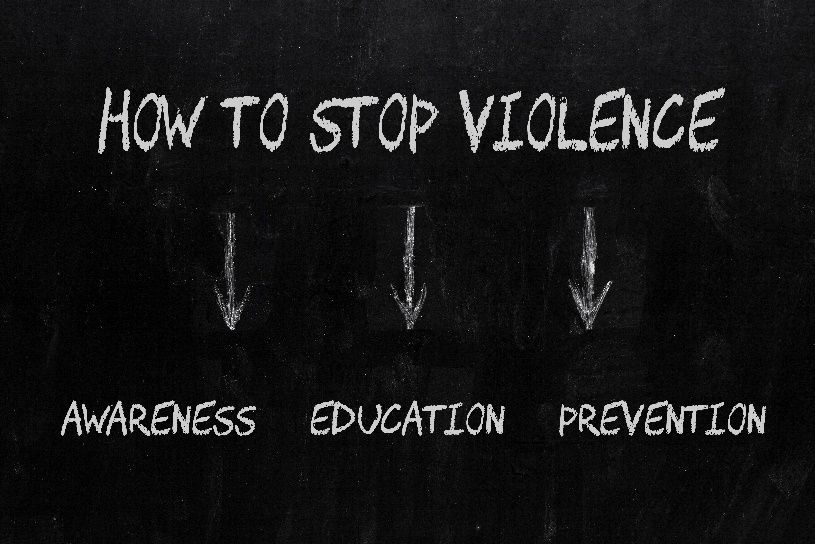
Violence Prevention During a Pandemic
Nicole Matthews, RN
Injury Prevention Coordinator Safe Kids Greater Flint
Hurley Medical Center – Flint, Michigan
Violence. What does it mean to you? This topic profoundly resonates with me as a survivor of being held at gunpoint once and held at knifepoint twice in my life. Violence prevention is a deeply held passion, and Injury Prevention professionals often state, “If we can predict it, we can prevent it.” Overall, rates of violence are rising, and this impacts us all. According to statewide data in Michigan specifically, we have experienced a 26% increase in penetrating trauma when comparing the first nine months of 2019 to 2020.1 The Trauma Recovery Center (TRC) has also seen a dramatic rise in traumatic violence rates, according to its Director, Tia Coles. The TRC is a center dedicated to assisting victims of traumatic violence.
Data
The pandemic has driven many trauma leaders to study the increasing rates of interpersonal violence and violence-related hospital admissions. Trauma program staff have wondered aloud whether these anecdotal reports were hyperbole or evidence of an alarming trend. Several research articles confirm the increase in penetrating trauma and violent intentional injury in general. In a retrospective review by Abdallah et al. published in the Journal of the American College of Surgeons in February of 2021, the authors noted an increase in intentional injury at a Philadelphia trauma center from 19.6 percent to 30.8 percent (p=0.0002) following stay-at-home orders (SAHO) instituted there in 2020. In absolute numbers, this was an increase in unintentional injuries to total injuries from 70/357 to 148/480.
During the same period, the rate of isolated gun-shot wounds increased from 12.6 percent to 22.9 percent (p=0.001). These increases occurred while the overall proportion for unintentional trauma reduced from 80.4 percent to 69.2 percent (p=0.0002). They concluded that either factor around the pandemic or the SAHOs – or both – had augmented existing urban violence.
The American College of Surgeons Committee on Trauma (ACS-COT) also completed a retrospective study with authors Chodos et al. They conducted a multi-center study of all adult trauma centers in the Washington, DC area from January 2019 through May 2020, separating the data into comparisons of ‘pre-COVID’ and ‘during-COVID.’ They found that penetrating trauma increased during COVID as compared to pre-COVID, 22.6 percent vs. 15.1 percent (p<.001). In absolute numbers, there was “a large, positively correlated trend” in the actual incidence of penetrating trauma during the study period.
Firearms and stabbing injuries increased 11.8 percent from 6.8 percent (p,0.001) and 9.2 percent from 6.9 percent (p=0.002), respectively. During this same period, blunt trauma decreased proportionally, from 84.9 percent to 77.4 percent. The authors recommended that future planning for pandemics must include “planning for an increase in trauma center resource utilization from penetrating trauma.”
According to Corinne Peek-Asa, rural populations are not immune to pandemic effects, director of the University of Iowa Injury Prevention Research Center (UI-IPRC). states that the risk factors for injuries and violence during a pandemic “may be disproportionately increased in rural populations.” As the UI-PRC noted in a recent post, social distancing and SAHOs, although critical to dealing with the pandemic, are in turn associated with increases in social isolation, intimate partner violence, injuries to children, and suicide in rural areas. When there is no pandemic, there are fewer healthcare services and shelters in rural communities, and suicide rates are higher in the rural U.S. at baseline.
Considerations
Where does this lead us? The current pandemic continues to prohibit direct-contact injury prevention events in many areas making prevention efforts difficult. However, there are things that we can do. First, we can be patient and display kindness toward others in our communities. We can also consider blood donation. As penetrating trauma increases, there is likely an increased need for blood donors. Please enter your zip code here for an American Red Cross blood donation site near you, and give today. Lastly, we can support our in-state trauma centers caring for victims of violence.
We know there is a 25 percent higher survival rate for injured patients treated at trauma centers versus those seen in hospitals without trauma services (MacKenzie et al., NEJM, 2006). Also, we know that a high cost is associated with these preventable injuries; According to the Coalition for National Trauma Research (CNTR), even a 5 percent reduction in trauma deaths and the economic burden would save 10,000 lives and $33 billion dollars each year.
In the words of Tia Coles, Hurley Medical’s Trauma Recovery Center, “We’ll never know if we overreacted or did too much – but we know when we have not done enough.” The very least we can do is to support a fully funded trauma system in Michigan to care for the most life-threatening injuries in our communities and be mindful of these impactful trends.
References
- Michigan Trauma Data information is provided on an “as is” basis. All warranties of any kind whatsoever are disclaimed. ImageTrend™ Patient Registry accessed on 3/1/21 meeting NTDB inclusion criteria. Incidents are missing if they do not have all the fields required to ascertain inclusion.
